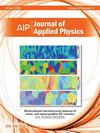Uniqueness of 56Fe as a primary standard for atomic masses
Physics-A Journal of General and Applied Physics
Pub Date : 1972-10-01
DOI:10.1088/0305-4470/5/10/005
引用次数: 0
Abstract
A recent evaluation of atomic masses confirms that 56Fe has uniquely the 'least' atomic mass per baryon, ZAM/A. Thus, with 56Fe as the primary standard (2656M=56) all other atomic masses would be greater than the mass number A and the corresponding 'mass excesses' would be not only 'positive' but also 'maxima'. Moreover, a mass excess relative to 56Fe is potentially the largest 'portion' of the atomic mass that can be transformed into energy (assuming conservation of baryon number); it therefore has a unique physical significance. Accordingly, a plot of the mass excesses against A and Z would provide a unique 'potential-energy surface' which should be useful in the representation of nuclidic transformations that involve a change in A(eg alpha decay) as well as those with A=constant.作为原子质量主要标准的56Fe的独特性
最近对原子质量的评估证实,56Fe的每重子的原子质量(ZAM/A)是唯一“最小”的。因此,以56Fe为主要标准(2656M=56),所有其他原子质量将大于质量数A,相应的“质量过剩”将不仅是“正的”,而且是“最大值”。此外,相对于56Fe的质量过剩可能是原子质量中可以转化为能量的最大“部分”(假设重子数守恒);因此,它具有独特的物理意义。因此,a和Z的质量过剩图将提供一个独特的“势能面”,这对于表示涉及a变化的原子核转换(例如α衰变)以及a =常数的原子核转换很有用。
本文章由计算机程序翻译,如有差异,请以英文原文为准。
求助全文
约1分钟内获得全文
求助全文

 求助内容:
求助内容: 应助结果提醒方式:
应助结果提醒方式:


